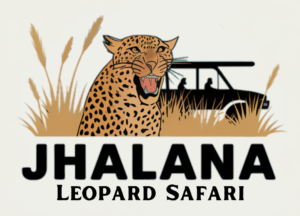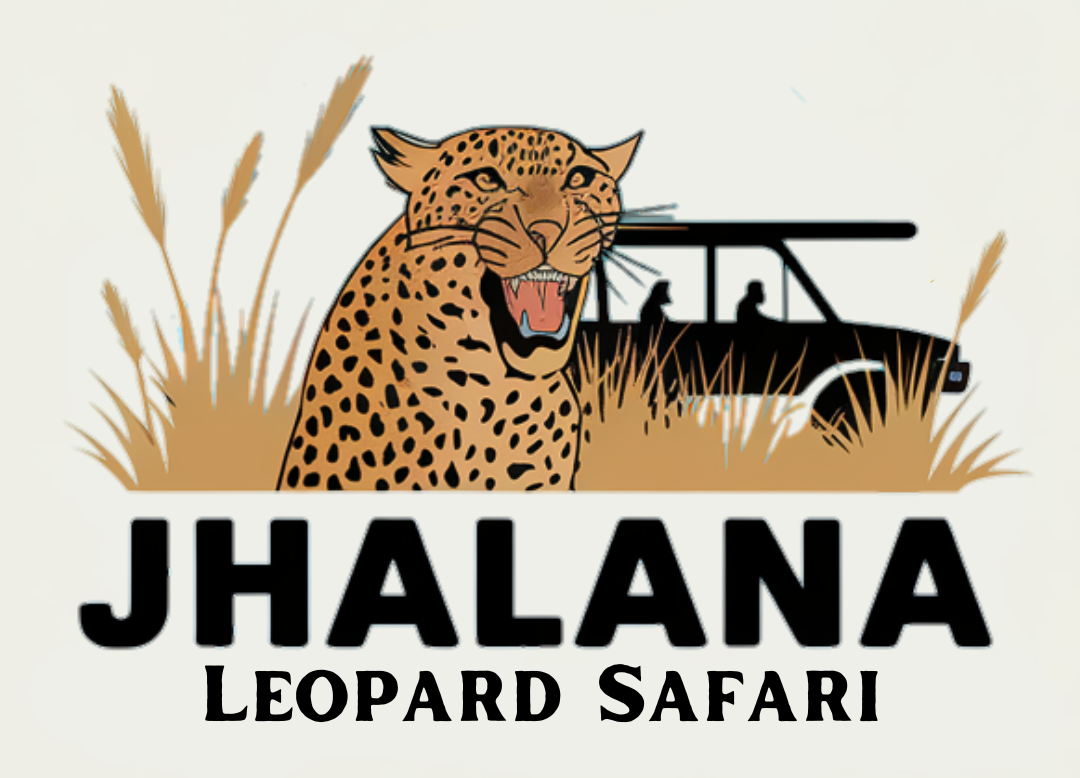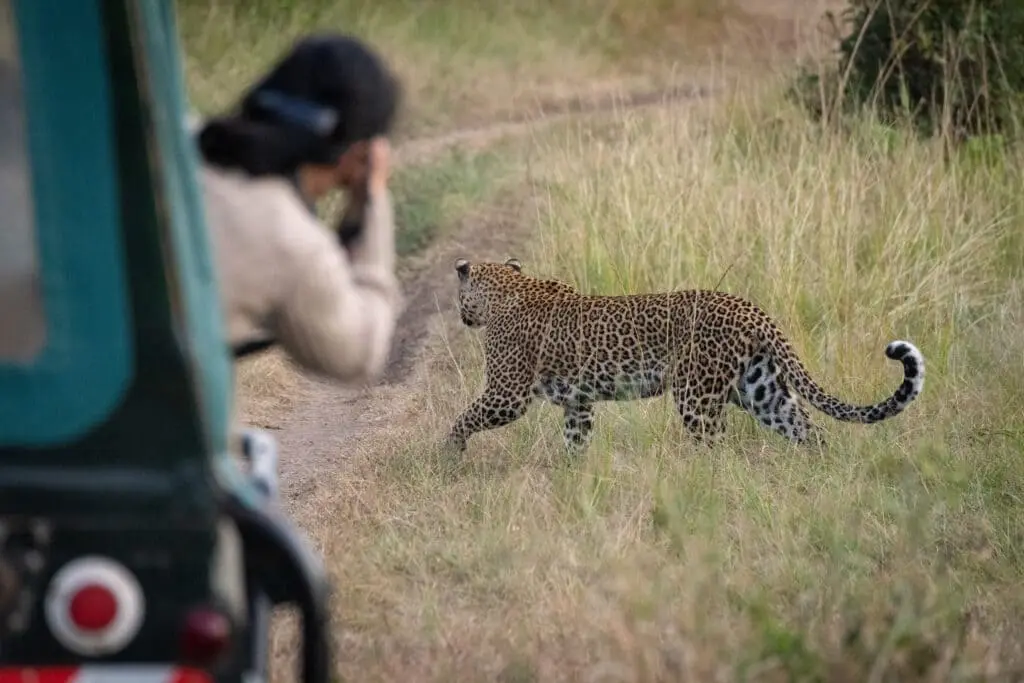
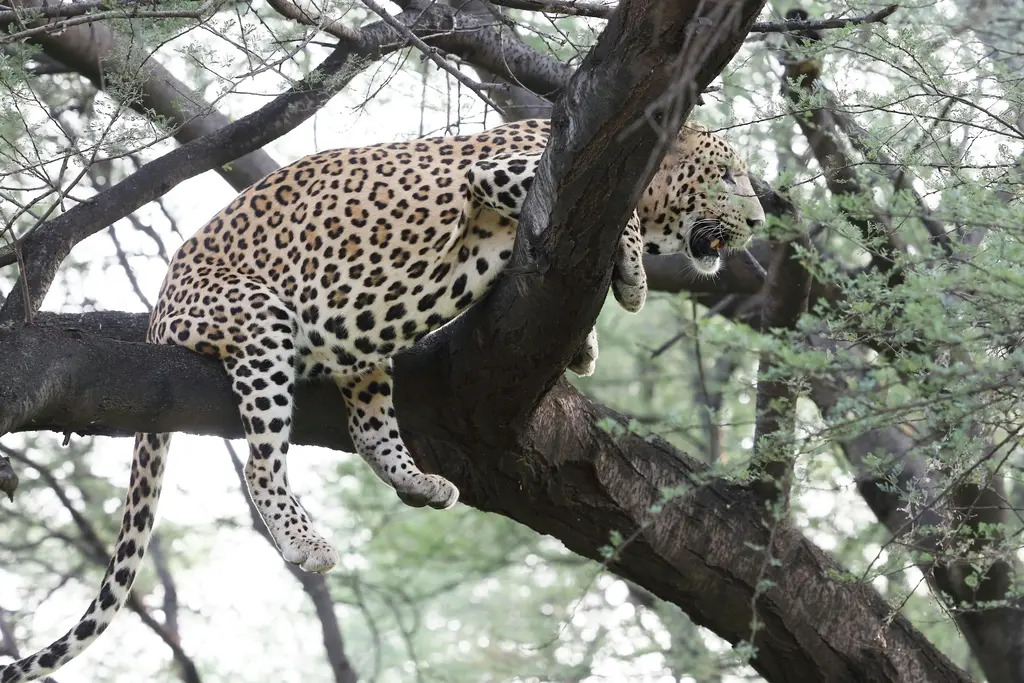
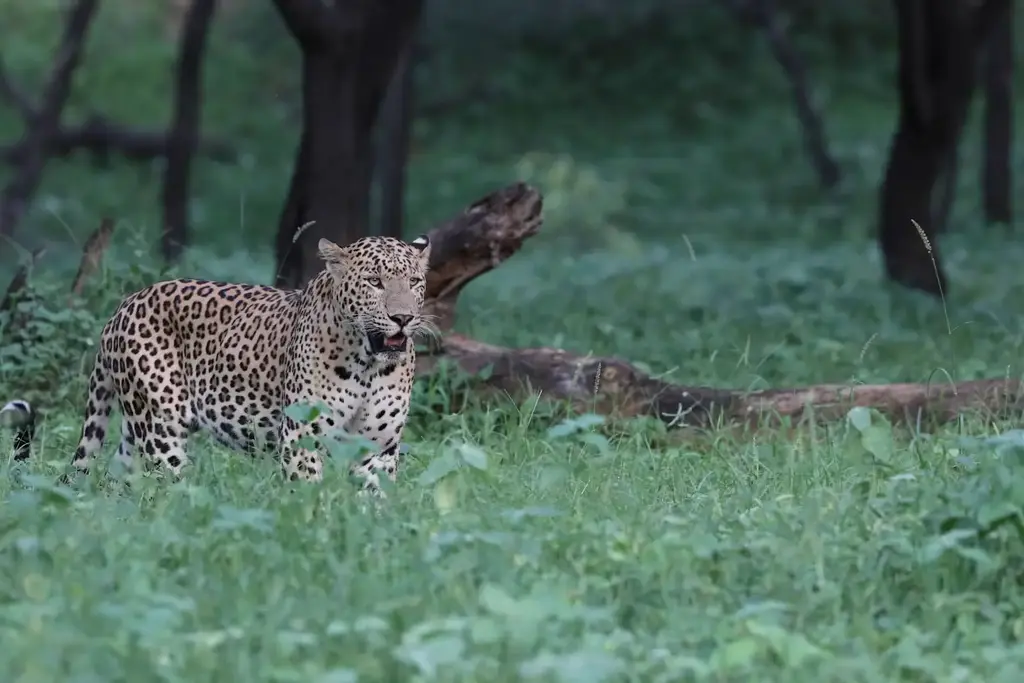
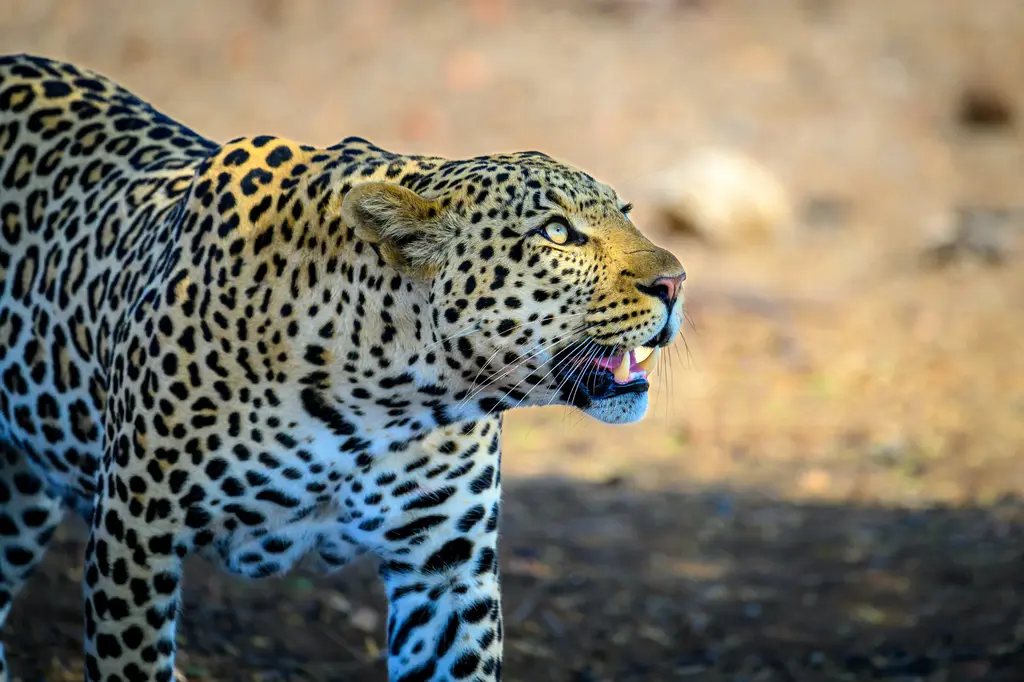
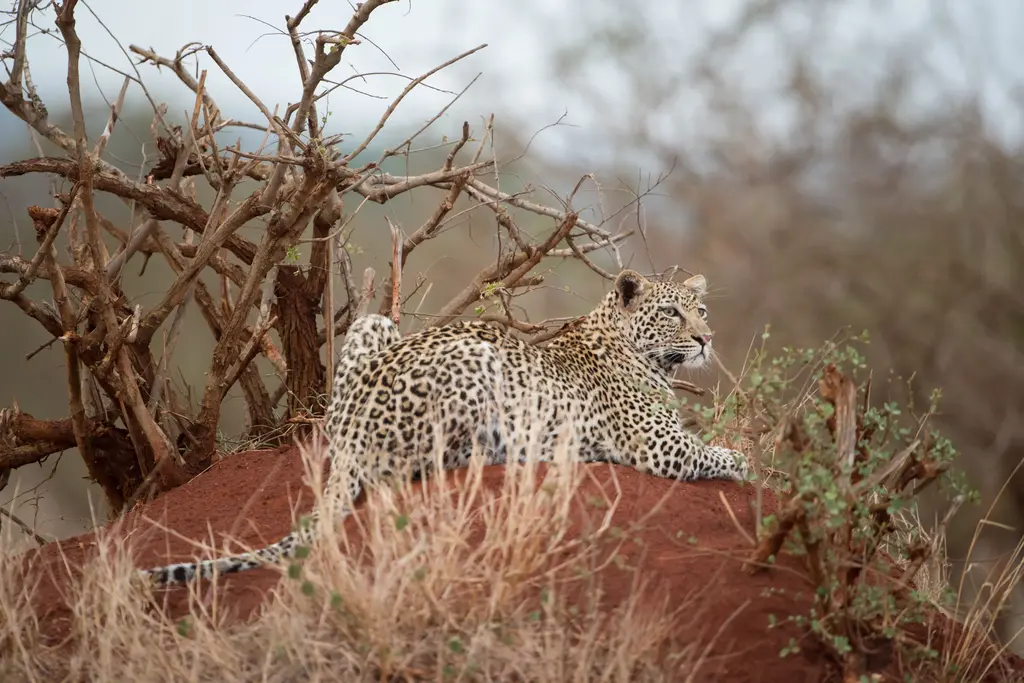





Images
Jhalana Leopard Safari
Booking Details
Jhalana Leopard Safari — Package & Inclusions
Everything you need to know before booking. Clear inclusions, transparent exclusions — no surprises.
Duration: 2 hr 30 min
Jhalana Jeep Safari For Indian Student
*Student ID needed
Booking Details
Inclusions
What we cover
Safari Charges
Park entry, vehicle fee and guide charges are included for the booked safari slot.
Guide
Trained local guide with wildlife spotting experience and safety briefing.
Permits (if any)
Any park permits required for the trip are handled by us (when applicable).
Exclusions
Not Included
Personal expenses
Souvenirs, tips, personal shopping and extra snacks are not included.
Meals
Food & full meals during the trip are not part of the standard package.
Accommodation
Overnight stays or hotels are not included in the safari cost.
Travel insurance
it is not provided by us by default.
Jhalana Jeep Safari For Indian Adult
Booking Details
Inclusions
What we cover
Safari Charges
Park entry, vehicle fee and guide charges are included for the booked safari slot.
Guide
Trained local guide with wildlife spotting experience and safety briefing.
Permits (if any)
Any park permits required for the trip are handled by us (when applicable).
Exclusions
Not Included
Personal expenses
Souvenirs, tips, personal shopping and extra snacks are not included.
Meals
Food & full meals during the trip are not part of the standard package.
Accommodation
Overnight stays or hotels are not included in the safari cost.
Travel insurance
it is not provided by us by default.
Jhalana Jeep Safari For Foreign National
Booking Details
Inclusions
What we cover
Safari Charges
Park entry, vehicle fee and guide charges are included for the booked safari slot.
Guide
Trained local guide with wildlife spotting experience and safety briefing.
Permits (if any)
Any park permits required for the trip are handled by us (when applicable).
Exclusions
Not Included
Personal expenses
Souvenirs, tips, personal shopping and extra snacks are not included.
Meals
Food & full meals during the trip are not part of the standard package.
Accommodation
Overnight stays or hotels are not included in the safari cost.
Travel insurance
it is not provided by us by default.
Jhalana Leopard Safari
- 4.6/5
- 4.7K Review
- • 1000+ Booked
Location
Meet us Here:
- Durations: 1.5 Hrs
Today's Offer
Discount Auto Applied
Package Options
Indian Student Package
Inclusions
- Permits for Indian Student
- Safari Charges
- Guide
Booking Details
Indian National Package
Inclusions
- Permits for Indian National
- Safari Charges
- Guide
Booking Details
Foreign National Package
Inclusions
- Permits for Foreign National
- Safari Charges
- Guide
Booking Details
Knowledge Box
Knowledge Box
Safari Timings
Jhalana Leopard Safari Timings
| Months | Morning Safari | Evening Safari |
|---|---|---|
| 1st Aug – 31st Oct | 06:45 am – 09:15 am | 03:45 pm – 06:15 pm |
| 1st Nov – 31st Jan | 07:00 am – 09:30 am | 03:15 pm – 05:45 pm |
| 1st Feb – 31st March | 06:15 am – 08:45 am | 03:45 pm – 06:15 pm |
| 1st April – 31st May | 05:45 am – 08:15 am | 04:15 pm – 06:45 pm |
| 1st May – 31st July | 05:45 am – 08:15 am | 04:45 pm – 07:15 pm |
Safari Prices (Check the Package for the Latest Price)
| Category | Per Passenger | Full Gypsy |
|---|---|---|
| Indian Tourists | ₹ 1,350 | ₹ 7,000 |
| International Tourists | ₹ 2,500 | ₹ 12,000 |
Important Things to Keep in Mind
- You must pay in advance for Jhalana Safari booking.
- Carry a valid ID proof; it is mandatory for entry.
- Bookings cannot be exchanged or transferred.
- Foreign tourists must provide passport details during booking.
- Arrive at the safari boarding point at least 25 minutes before the scheduled time.
About Jhalana Forest
Jhalana Forest is nestled in the outskirts of Jaipur, Rajasthan. It is a beautiful wildlife haven known for having a huge population of leopards. The Jhalana leopard safari in the morning and evening is the best way to explore the Jhalana forest, spot the apex predators—leopards here—and other wildlife. The forest spans across 20 square kilometers, and this semi-arid and dense forest is part of the stunning Aravalli Hills. They offer a rugged landscape of scrubland, dry deciduous forests, and rocky outcrops. The forest is also home to almost 40 leopards along with cubs, making it one of the best leopard sighting places in India.
Jhalana Forest is also home to other rich varieties of wildlife, including jackals, spotted deer, hyenas, wild boars, and 200 bird species. The park is also known for its diverse vegetation, ranging from forest clearings to thorny bushes attracting wildlife, specifically around the natural waterholes. It is also a key conservation area with efforts focused on protecting the leopards and their habitats. It is near Jaipur, so accessing it from nearby areas and cities is easy. You can also enjoy a guided Jhalana Leopard Safari for exploring the wildlife of the park, including leopards and other animals like hyenas, sambar deer, chital, and reptiles like snakes and monitor lizards.
History of Jhalana Reserve
About Jhalana Leopard Reserve
Leopards and tigers were once widely found across the hill ranges of Rajasthan, particularly in the Aravalli ranges near the Jhalana region. During the 19th century, Jhalana served as a popular royal hunting ground, attracting nobles and royals from various states. The historic Shikar Audhi, or hunting palace, still stands today as a proud reminder of that era.
In 1948, the last of the tigers in Jhalana were hunted, and their cubs were later relocated to the Jaipur Zoo. Since then, leopards have become the apex predators of this region and are now carefully protected under conservation efforts.
In 2017, Jhalana was officially declared a Leopard Reserve, covering an area of over 20 square kilometers. The reserve is home to a rich variety of flora and fauna, offering visitors an immersive experience in the heart of Rajasthan’s wild landscape.
Wildlife of Jhalana Leopard Safari Park
Wildlife at Jhalana Leopard Safari Park
Jhalana Leopard Safari Park is one of the best places in Rajasthan to witness diverse wildlife in its natural habitat. As the name suggests, leopards are the dominant species here — the park is home to around 40 adult leopards and 4–5 cubs. With no tigers present, these leopards are the apex predators of the region.
The park also hosts a rich variety of other wildlife, including spotted deer (chital), hyenas, langurs, wild boars, and jackals. Its scrubby dry forests and rocky outcrops create an ideal habitat for these species, offering visitors an authentic glimpse of Rajasthan’s wild landscape.
The birdlife in Jhalana Leopard Reserve is equally remarkable, with over 200 recorded species such as eagles, parakeets, peafowls, and kingfishers. During the dry season, the park’s waterholes attract a wide range of birds and animals, making it a paradise for nature lovers and photographers alike.
The region’s diverse flora includes acacia trees, thorny shrubs, and open grasslands that support a rich ecosystem. Visitors may also encounter Indian civets, jungle cats, desert foxes, porcupines, and monitor lizards. Reptile enthusiasts will be thrilled to find various snake species inhabiting the park as well.
Zones and Area of Jhalana Leopard Safari Park
Safari Zones at Jhalana
Jhalana Leopard Reserve is renowned for providing close encounters with wildlife. Currently, the reserve is divided into two main areas: Zone 1 and Zone 2.
Zone 1 is particularly ideal for leopard sightings due to the presence of several waterholes, which attract a variety of wildlife and make spotting animals easier. Exploring both zones thoroughly takes about 2.5 to 3 hours, allowing visitors ample time to observe and photograph the rich fauna of the park.
Best Time to Visit
Best Time to Visit Jhalana Leopard Reserve
The park is open throughout the year, but the best time to visit is between November and April, when the weather is pleasant and the surroundings are in full bloom. This period is ideal not only for spotting leopards but also for enjoying the lush natural beauty of the reserve. Here’s what to expect during different seasons:
Winter Season (October – March)
Winters are the peak season at Jhalana. The weather is pleasant, and the greenery is at its best, making the surroundings appealing to wildlife lovers. This is also an excellent time for birdwatching, as many colorful local and migratory birds are visible. Since it is the peak season, it is advisable to book your safari in advance.
Summer Season (April – June)
Summers in Rajasthan are extremely hot, with temperatures reaching up to 45°C. The heat makes safari experiences less comfortable, which is why this period is generally not recommended. However, if you can handle the heat, it is a good time to enjoy an affordable safari with fewer crowds. Leopards are often seen near waterholes during this season, increasing the chances of spotting them.
Monsoon Season (July – September)
The monsoon season is less ideal for visiting Jhalana Leopard Reserve. While the park remains open and the lush greenery creates beautiful photo opportunities, heavy rains may affect your safari experience. It is recommended to carry a raincoat if visiting during this season.
Jhalana Leopard Safari Timings
| Months | Morning Safari | Evening Safari |
|---|---|---|
| 1st Aug – 31st Oct | 06:45 am – 09:15 am | 03:45 pm – 06:15 pm |
| 1st Nov – 31st Jan | 07:00 am – 09:30 am | 03:15 pm – 05:45 pm |
| 1st Feb – 31st March | 06:15 am – 08:45 am | 03:45 pm – 06:15 pm |
| 1st April – 31st May | 05:45 am – 08:15 am | 04:15 pm – 06:45 pm |
| 1st May – 31st July | 05:45 am – 08:15 am | 04:45 pm – 07:15 pm |
Safari Prices
| Category | Per Passenger | Full Gypsy |
|---|---|---|
| Indian Tourists | ₹ 1,200 | ₹ 7,000 |
| International Tourists | ₹ 2,000 | ₹ 12,000 |
Important Things to Keep in Mind
- Check the Packages for the Latest Price
- You must pay in advance for Jhalana Safari booking.
- Carry a valid ID proof; it is mandatory for entry.
- Bookings cannot be exchanged or transferred.
- Foreign tourists must provide passport details during booking.
- Arrive at the safari boarding point at least 25 minutes before the scheduled time.
Jhalana Forest is nestled in the outskirts of Jaipur, Rajasthan. It is a beautiful wildlife haven known for having a huge population of leopards. The Jhalana leopard safari in the morning and evening is the best way to explore the Jhalana forest, spot the apex predators—leopards here—and other wildlife. The forest spans across 20 square kilometers, and this semi-arid and dense forest is part of the stunning Aravalli Hills. They offer a rugged landscape of scrubland, dry deciduous forests, and rocky outcrops. The forest is also home to almost 40 leopards along with cubs, making it one of the best leopard sighting places in India.
Jhalana Forest is also home to other rich varieties of wildlife, including jackals, spotted deer, hyenas, wild boars, and 200 bird species. The park is also known for its diverse vegetation, ranging from forest clearings to thorny bushes attracting wildlife, specifically around the natural waterholes. It is also a key conservation area with efforts focused on protecting the leopards and their habitats. It is near Jaipur, so accessing it from nearby areas and cities is easy. You can also enjoy a guided Jhalana Leopard Safari for exploring the wildlife of the park, including leopards and other animals like hyenas, sambar deer, chital, and reptiles like snakes and monitor lizards.
About Jhalana Leopard Reserve
Leopards and tigers were once widely found across the hill ranges of Rajasthan, particularly in the Aravalli ranges near the Jhalana region.
During the 19th century, Jhalana served as a popular royal hunting ground, attracting nobles and royals from various states.
The historic Shikar Audhi, or hunting palace, still stands today as a proud reminder of that era.
In 1948, the last of the tigers in Jhalana were hunted, and their cubs were later relocated to the Jaipur Zoo.
Since then, leopards have become the apex predators of this region and are now carefully protected under conservation efforts.
In 2017, Jhalana was officially declared a Leopard Reserve, covering an area of over 20 square kilometers.
The reserve is home to a rich variety of flora and fauna, offering visitors an immersive experience in the heart of Rajasthan’s wild landscape.
Wildlife at Jhalana Leopard Safari Park
Jhalana Leopard Safari Park is one of the best places in Rajasthan to witness diverse wildlife in its natural habitat.
As the name suggests, leopards are the dominant species here — the park is home to around 40 adult leopards and 4–5 cubs.
With no tigers present, these leopards are the apex predators of the region.
The park also hosts a rich variety of other wildlife, including spotted deer (chital), hyenas,
langurs, wild boars, and jackals.
Its scrubby dry forests and rocky outcrops create an ideal habitat for these species,
offering visitors an authentic glimpse of Rajasthan’s wild landscape.
The birdlife in Jhalana Leopard Reserve is equally remarkable, with over 200 recorded species such as
eagles, parakeets, peafowls, and kingfishers.
During the dry season, the park’s waterholes attract a wide range of birds and animals, making it a paradise for nature lovers and photographers alike.
The region’s diverse flora includes acacia trees, thorny shrubs, and open grasslands
that support a rich ecosystem. Visitors may also encounter Indian civets, jungle cats,
desert foxes, porcupines, and monitor lizards.
Reptile enthusiasts will be thrilled to find various snake species inhabiting the park as well.
Safari Zones at Jhalana
Jhalana Leopard Reserve is renowned for providing close encounters with wildlife.
Currently, the reserve is divided into two main areas: Zone 1 and Zone 2.
Zone 1 is particularly ideal for leopard sightings due to the presence of several waterholes,
which attract a variety of wildlife and make spotting animals easier. Exploring both zones thoroughly takes about 2.5 to 3 hours,
allowing visitors ample time to observe and photograph the rich fauna of the park.
Best Time to Visit Jhalana Leopard Reserve
The park is open throughout the year, but the best time to visit is between November and April,
when the weather is pleasant and the surroundings are in full bloom. This period is ideal not only for spotting leopards but also for enjoying the lush natural beauty of the reserve.
Here’s what to expect during different seasons:
Winter Season (October – March)
Winters are the peak season at Jhalana. The weather is pleasant, and the greenery is at its best, making the surroundings appealing to wildlife lovers.
This is also an excellent time for birdwatching, as many colorful local and migratory birds are visible.
Since it is the peak season, it is advisable to book your safari in advance.
Summer Season (April – June)
Summers in Rajasthan are extremely hot, with temperatures reaching up to 45°C.
The heat makes safari experiences less comfortable, which is why this period is generally not recommended.
However, if you can handle the heat, it is a good time to enjoy an affordable safari with fewer crowds.
Leopards are often seen near waterholes during this season, increasing the chances of spotting them.
Monsoon Season (July – September)
The monsoon season is less ideal for visiting Jhalana Leopard Reserve. While the park remains open and the lush greenery creates beautiful photo opportunities,
heavy rains may affect your safari experience. It is recommended to carry a raincoat if visiting during this season.
Project Initiative in Jhalana National Park
Project Initiative in Jhalana Leopard Safari Park
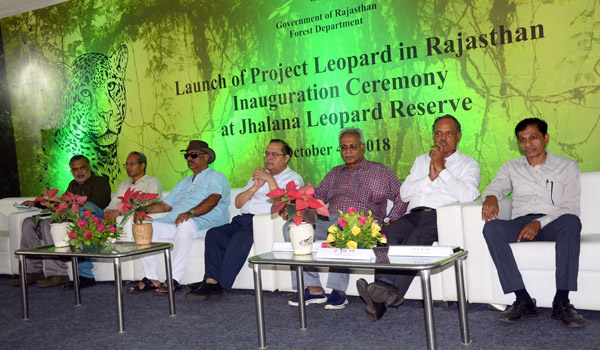
- Leopard Conservation: To protect the leopard population, including anti-poaching measures, habitat restoration, and monitoring the population using GPS and camera traps.
- Human-Wildlife Conflict Mitigation: It aims to reduce conflicts between nearby villages and leopards by creating safe corridors and educating locals.
- Eco-tourism Promotion: Offering guided jeep safaris, educational programs, and birdwatching tours helps promote eco-tourism.
- Community engagement: Engaging local community in conservation efforts to provide livelihood and provide employment opportunities.
Project Initiative in Jhalana National Park
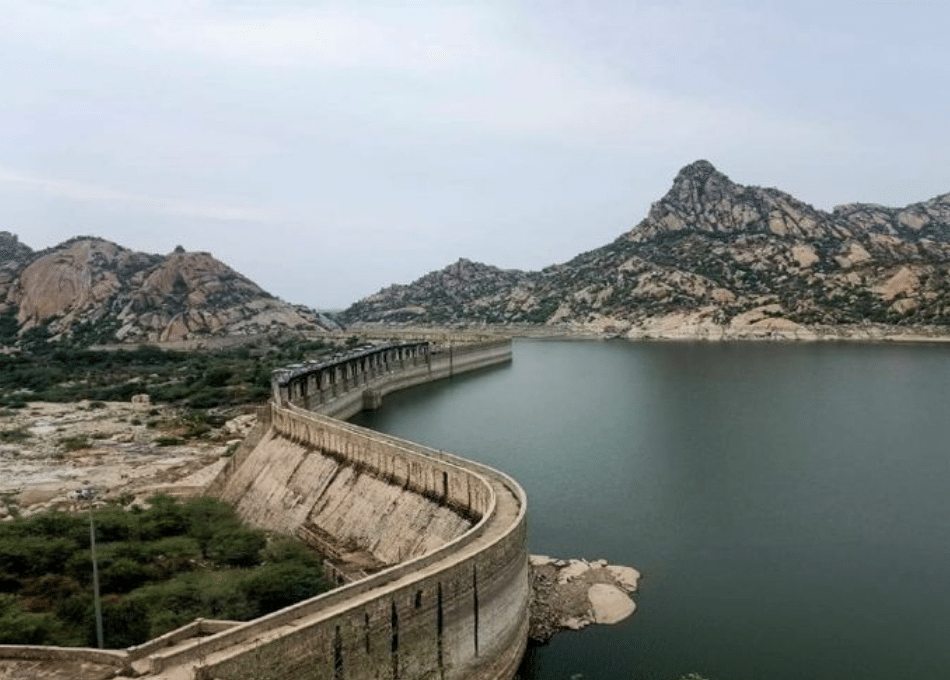
- Leopard Conservation: To protect the leopard population, including anti-poaching measures, habitat restoration, and monitoring the population using GPS and camera traps.
- Human-Wildlife Conflict Mitigation: It aims to reduce conflicts between nearby villages and leopards by creating safe corridors and educating locals.
- Eco-tourism Promotion: Offering guided jeep safaris, educational programs, and birdwatching tours helps promote eco-tourism.
- Community engagement: Engaging local community in conservation efforts to provide livelihood and provide employment opportunities.
Starting From
Booking Details
FAQs About Jhalana Leopard Safari
What is Jhalana Wildlife Reserve Famous For?
Are There Any Safari Options Available in Jhalana Wildlife Reserve?
What Kind of Wildlife Can I See in Jhalana Leopard Safari?
Are There Any Restrictions or Rules for Visitors?
Yes, Jhalana has a few rules and restrictions for the tourists as well as the safety of the wildlife. These rules include:
- Visitors should stay inside their jeep at all times.
- Do not make loud noises
- Do not use flash photography
- Adhere to the designated safari routes, do not try to force the driver into taking another route.
Can I Take Photographs Inside Jhalana Leopard Safari Park?
Yes, taking photos is allowed inside Jhalana Leopard Safari Park, but there are a few rules you need to follow. These include:
- Avoid using flash photography as it disturbs the wildlife.
- If you are bringing professional camera equipment, prior permission is needed.
- Do not get too close to the animals while doing wildlife photography.
